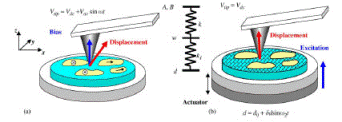Department of Physics and Astronomy: Publications and Other Research

Alexei Gruverman Publications
Document Type
Article
Date of this Version
2015
Citation
Badger M, Ortega-Jimenez VM, von Rabenau L, Smiley A, Dudley R (2015) Electrostatic Charge on Flying Hummingbirds and Its Potential Role in Pollination. PLoS ONE 10(9): e0138003.
doi:10.1371/journal.pone.0138003
Abstract
Electrostatic phenomena are known to enhance both wind- and insect-mediated pollination, but have not yet been described for nectar-feeding vertebrates. Here we demonstrate that wild Anna's Hummingbirds (Calypte anna) can carry positive charges up to 800 pC while in flight (mean ± s.d.: 66 ± 129 pC). Triboelectric charging obtained by rubbing an isolated hummingbird wing against various plant structures generated charges up to 700 pC. A metal hummingbird model charged to 400 pC induced bending of floral stamens in four plants (Nicotiana, Hemerocallis, Penstemon, and Aloe spp.), and also attracted falling Lycopodium spores at distances of < 2 mm. Electrostatic forces may therefore influence pollen transfer onto nectar-feeding birds.
Included in
Atomic, Molecular and Optical Physics Commons, Condensed Matter Physics Commons, Engineering Physics Commons, Other Physics Commons


Comments
© 2015 Badger et al. This is an open access article distributed under the terms of the Creative Commons Attribution License,